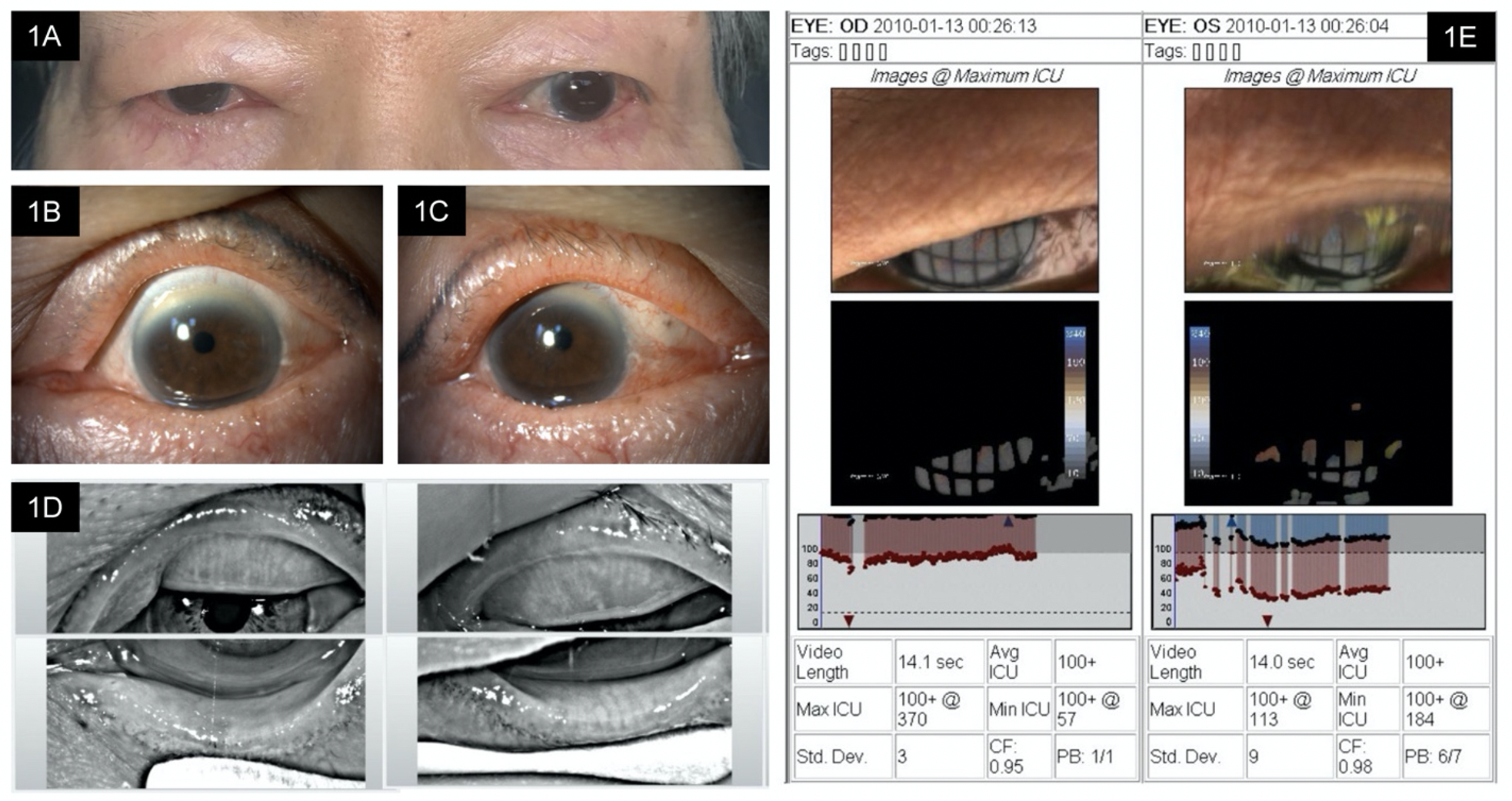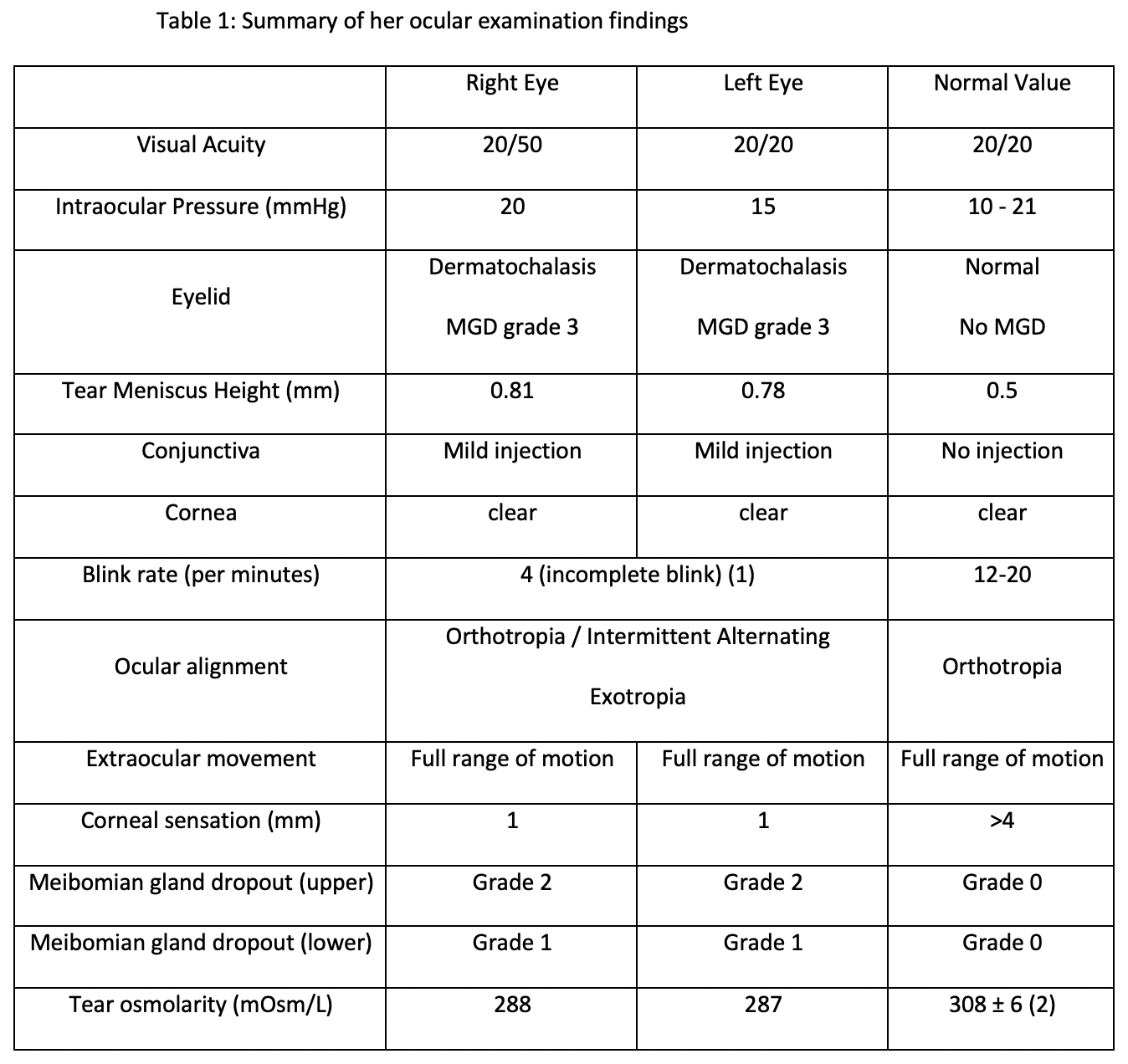Category: Parkinson's Disease: Non-Motor Symptoms
Objective: To demonstrate a case report of excessive tearing in Parkinson’s disease patient
Background: Dry eye is the common ocular manifestations in PD patients. The decreased blink rate and the decreased corneal sensation were directly decreased the reflex tear production together with many anticholinergic medications could lead to aqueous deficient dry eye. Furthermore, the decreased blink rate can cause a stasis in meibomian gland and ineffective pumping of meibum that could lead to MGD and evaporative dry eye.
Method: A case report of 81-year-old female PD patient presented with excessive tearing in her right eye for 3 years and in her left eye for 1 year. She noticed that her tearing occurred corresponded with the wearing off period and with excessive physical activity period for the past 3 years and improved after receiving rotigotine transdermal patch. She was diagnosed PD at the age of 50 with the presenting symptoms of depression and tremor on right side. Her disease duration is 30 years. Her Hoehn and Yahr was stage 4. Total levodopa equivalent dose was 545 mg/day and other medications were clonazepam and escitalopram. She had postural instability and limited ambulation. She had wearing off 30 minutes before every next dosage. She also had symptoms of panic attack, anosmia, REM sleep behavior disorder, constipation.
Results: Her examination showed an old female sitting on wheelchair with mask face and excessive tearing in both eyes during wearing off period. She had bilateral bradykinesia, rigidity, rest tremor more prominent on the right side than left side. Eye examination showed severely decreased blink rate. Her eyelid margins showed severe MGD with telangiectatic vessels. No other sign of conjunctivitis or any infection. The excessive tearing was confirmed by increased tear meniscus height, hypo-osmolarity and normal tear interferometer. The lacrimal systems were anatomical patent. Other details of ocular examinations were showed in Figure 1 and Table 1.
Conclusion: We have proposed a hypothesis of excessive tearing to be a combined mechanism of increased production and defective drainage. The increased tear production was suspected from autonomic dysfunction as similar as the pathophysiology of sialorrhea. In addition, the defective drainage was suspected from bradykinesia of orbicularis oculi muscle together with the ineffective and infrequent blinking from Parkinson’s disease.
References: 1. Demirci S, Gunes A, Koyuncuoglu HR, Tok L, Tok O. Evaluation of corneal parameters in patients with Parkinson’s disease. Neurol Sci. 2016;37(8):1247-52.
2. Reddy VC, Patel SV, Hodge DO, Leavitt JA. Corneal sensitivity, blink rate, and corneal nerve density in progressive supranuclear palsy and Parkinson disease. Cornea. 2013;32(5):631-5.
3. Nowacka B, Lubinski W, Honczarenko K, Potemkowski A, Safranow K. Ophthalmological features of Parkinson disease. Med Sci Monit. 2014;20:2243-9.
4. Chen Z, Li G, Liu J. Autonomic dysfunction in Parkinson’s disease: Implications for pathophysiology, diagnosis, and treatment. Neurobiol Dis. 2020;134:104700.
5. Tomlinson A, McCann LC, Pearce EI. Comparison of human tear film osmolarity measured by electrical impedance and freezing point depression techniques. Cornea. 2010;29(9):1036-41.
To cite this abstract in AMA style:
S. Yaisawang, J. Sringean, N. Kasetsuwan, K. Pongpirol, R. Bhidayasiri. Excessive tearing; a paradoxical ocular manifestation of Parkinson’s disease [abstract]. Mov Disord. 2022; 37 (suppl 2). https://www.mdsabstracts.org/abstract/excessive-tearing-a-paradoxical-ocular-manifestation-of-parkinsons-disease/. Accessed April 16, 2025.« Back to 2022 International Congress
MDS Abstracts - https://www.mdsabstracts.org/abstract/excessive-tearing-a-paradoxical-ocular-manifestation-of-parkinsons-disease/


